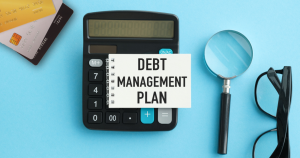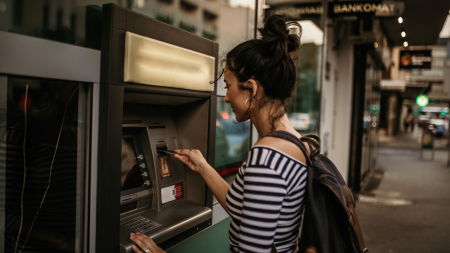Photo_Concepts/Getty Images
Key takeaways
- If you owe more than the car is worth, meaning you have negative equity, you should pay off a car loan before you trade it in.
- If you have positive equity on the car, meaning you owe less than the car is worth, you can trade it in and use the positive equity towards a new vehicle.
- If you have negative equity, look into alternatives, like selling the car privately for a higher price.
- Always check prices in your area to ensure the trade-in offer from the dealership is competitive.
You can trade in a car that is not paid off — dealerships are used to handling vehicles under liens. But whether it’s a good idea depends in part on whether you have positive or negative equity. Equity is the difference between something’s value and how much you owe on it. If the thing you own is worth more than you owe, you have positive equity. If you owe more than what it is worth, you have negative equity.
How to trade in a car that is not paid off
It is common to trade in a car before paying it off. With positive equity, you can turn your current vehicle into a down payment. But even with negative equity, trading in your car for something cheaper can help you reduce your losses.
1. Collect the necessary documents
Dealers will want to see basic information about yourself and your loan, including:
2. Find your car’s trade-in value
Tools available on Kelley Blue Book (KBB) or Edmunds can help you calculate your car’s value, which helps you negotiate your trade-in offer. Once you have that number, use it to determine your budget for your next vehicle and your equity in your current vehicle.
To calculate your equity, subtract your remaining loan amount — based on the payoff amount your lender quotes you — from the average trade-in value. You will get a negative number if you are upside-down on your loan.
For example, let’s say the KBB value for your car is $10,000. If you owe $4,500 on your car loan, that means you have $5,500 in equity.
3. Shop around
While you aren’t obligated to trade in your current car at the dealer where you buy your next one, note that in most states, trading in and buying at the same place will lower your sales tax. You deduct your trade-in amount from your next car’s total price, and the result is used to set the sales tax.
In any case, take the time to see what dealers will offer you — and compare those offers to your findings from KBB and Edmunds.
Ideally, you can trade in your vehicle for more than the amount remaining on your loan. This will ensure you have extra to put toward your next car. If not, try to negotiate as close as possible to the remaining amount on your loan to minimize your losses.
4. Make the deal
After you shop trade-in options, work with the dealer to complete the process. You should walk away with a check you can send to your lender to pay off your trade-in.
Some dealers may handle the payoff for you. If they do, follow up to ensure the money gets where it’s supposed to go.
You can use any leftover cash as part of a down payment toward another vehicle. Next, compare current auto loan rates and start shopping for your next car.
Why vehicle equity matters
Often, it’s best to pay down or pay off your auto loan before selling it or trading it in. The main concern is whether you have positive or negative equity on your loan. With negative equity, you should pay off your auto loan before you trade in your car.
- Positive equity: Positive equity on an auto loan means that you owe less on the car than it is worth. In this case, you don’t have to pay off your car loan in full before trading it in unless you want to. You will receive enough money from trading in to pay off the loan.
- Negative equity: Negative equity is the opposite. If you trade in your car with negative equity, you may have to pay off the remaining loan balance out of pocket before trading it in. You could instead roll the negative equity into your new loan.
Why you shouldn’t trade in a car with negative equity
Moving forward with a trade-in when you have negative equity is typically a bad idea. You will be responsible for paying down your new loan on top of the amount left over from your previous loan. Essentially, you will pay for your new car and the one you just sold.
Lenders often let you “roll over” the negative equity by adding the owed amount to your new loan’s balance. Use a negative equity calculator to get a better idea of what your payments will look like. This allows you to see how your old loan affects your new one.
If your new car is inexpensive enough, there’s a chance your new payment will still be lower than your old one. But as a general rule, avoid trading in a car with negative equity.
Pros and cons of trading in a financed car
Pros
- You could lower your monthly payment. If you have positive equity in your current vehicle and you plan to purchase a vehicle of equal or lesser value, you could end up with a lower monthly payment on your car loan.
- New vehicle, smaller down payment. You could get a new (or new to you) vehicle with the down payment costs covered by your previous vehicle (if you have positive equity.
- You may get a tax break. If you trade in your vehicle with the same dealer where you bought your vehicle, you don’t have to pay sales tax in many states.
- No buyer ghosting. When you trade in a vehicle, you don’t have to worry about the private party sale process. Avoid potential buyers ghosting you on vehicle listing sites.
Cons
- You could increase your monthly payment. Trading in your old vehicle for a newer or more valuable vehicle could mean you owe more on the loan. This means you’ll end up with a higher monthly payment on your car loan, which can impact your monthly budget.
- You might not make as much money on the sale. Selling your used vehicle to a private party often means you make more money on the sale. Trading in your vehicle to the dealer is convenient, but you will likely make less when trading in your vehicle than you would selling it.
- You might need extra cash. If you have negative equity in your current vehicle and you want to trade it in, you will need to make a down payment on the new vehicle and cover the money you owe on your old vehicle.
Alternatives to trading in your car
If you’re upside down on your loan, trading it in is unlikely to be the best course of action.
- Sell it yourself: Opting for a private sale may allow you to net more money. Even if you have to get permission from your lender to sell, a private sale could mean more to put down on your next car.
- Continue making payments: If your payments aren’t currently breaking the bank, set aside some extra money to break even. This way, trading your car in won’t involve rolling any remaining loan balance into your new auto loan.
- Refinance current loan: Auto loan refinance rates may be lower than what you’re currently paying. This may reduce the total amount you pay in interest, and in turn, help you avoid negative equity on your loan.
Bottom line
Once you understand how much your vehicle is worth compared to how much you owe, you can start shopping around for the best trade-in deals. Trading in your car for a less expensive option may be the right solution. If you do have negative equity, try refinancing instead — it may allow you to lower your interest rate so you pay less overall.
Most importantly, avoid rolling your remaining loan into a new one if you can help it. Work with your lender, sell your car or find an alternative option to avoid taking on additional debt.
Why we ask for feedback
Your feedback helps us improve our content and services. It takes less than a minute to
complete.
Your responses are anonymous and will only be used for improving our website.
Help us improve our content
Read the full article here









